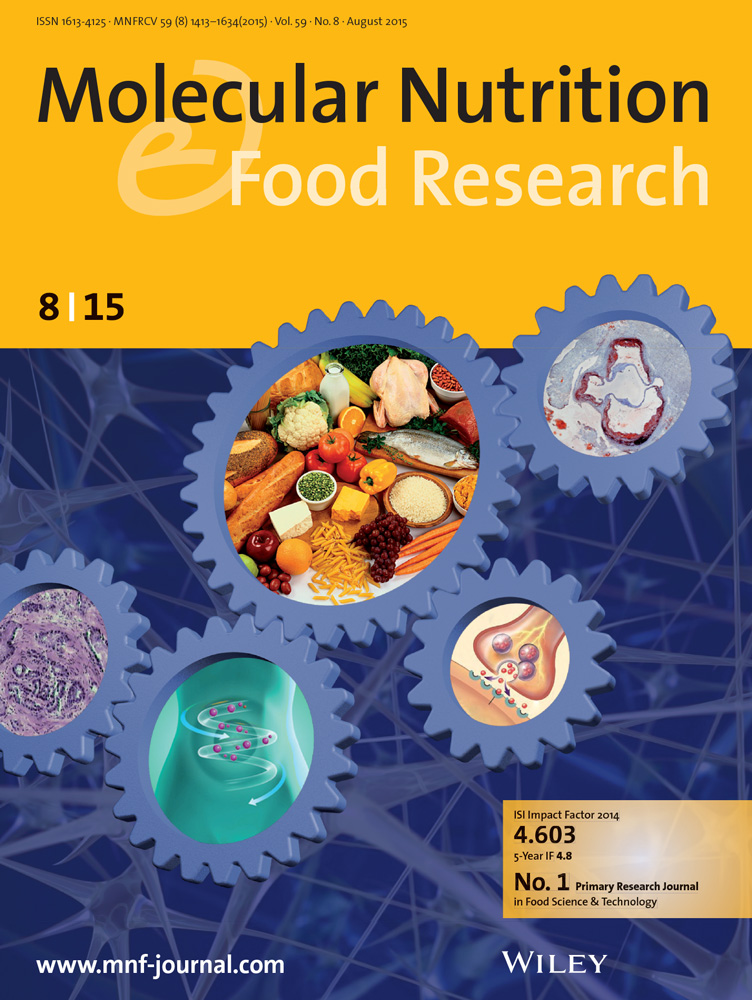Saccharomyces boulardii Alleviates Ovalbumin-Induced Pyroptosis Through Cyba and IL-17 Signaling Pathway.
IF 4.2
2区 农林科学
Q1 FOOD SCIENCE & TECHNOLOGY
引用次数: 0
Abstract
Saccharomyces boulardii (S. boulardii), a beneficial yeast probiotic, is effective in treating asthma in children. This study aimed to examine the effects of S. boulardii on Ovalbumin (OVA)-induced pyroptosis in human bronchial epithelial cells. An OVA-induced asthma mouse model was used with S. boulardii as an intervention. S. boulardii alleviated OVA-induced lung tissue pyroptosis and intestinal tissue damage in asthmatic mice. The mRNA sequencing analysis revealed differentially expressed genes, including elevated Cyba levels in the intestinal tissues of the OVA group. However, S. boulardii reduced Cyba levels. Gene Set Enrichment analysis showed the involvement of IL-17 signaling pathway. In vivo experiments showed that S. boulardii inhibited IL-17 signaling pathway in the intestinal and lung tissues. In vitro experiments revealed that IL-17 regulation of ROS production, promoting BEAS-2B cell pyroptosis, required the involvement of Cyba. Moreover, Cyba knockdown inhibited activation of NLRC4 and NLRP3 inflammasomes induced by IL-17 in vivo. This study revealed for the first time the important role of Cyba and IL-17 pathways in asthma pathology and demonstrated that S. boulardii exerted its therapeutic effects by modulating these pathways. These findings provided a basis for developing nutrition interventions targeting gut microbiota and immune health.博氏酵母菌通过Cyba和IL-17信号通路缓解卵清蛋白诱导的焦亡
博拉氏酵母菌是一种有益的益生菌,对治疗儿童哮喘有效。本研究旨在探讨博氏弧菌对卵清蛋白(OVA)诱导的人支气管上皮细胞焦亡的影响。采用ova诱导的哮喘小鼠模型,博氏沙门氏菌作为干预。博氏弧菌可减轻ova诱导的哮喘小鼠肺组织焦亡和肠组织损伤。mRNA测序分析显示了差异表达基因,包括OVA组肠组织中Cyba水平升高。然而,博氏弧菌降低了Cyba水平。基因集富集分析显示参与了IL-17信号通路。体内实验表明,博氏弧菌可抑制肠道和肺组织中IL-17信号通路。体外实验表明,IL-17调控ROS生成,促进BEAS-2B细胞焦亡,需要Cyba的参与。此外,Cyba敲低可抑制IL-17诱导的NLRC4和NLRP3炎症小体的激活。本研究首次揭示了Cyba和IL-17通路在哮喘病理中的重要作用,并证明了博氏沙门氏菌通过调节这些通路发挥其治疗作用。这些发现为开发针对肠道微生物群和免疫健康的营养干预提供了基础。
本文章由计算机程序翻译,如有差异,请以英文原文为准。
求助全文
约1分钟内获得全文
求助全文
来源期刊

Molecular Nutrition & Food Research
工程技术-食品科技
CiteScore
8.70
自引率
1.90%
发文量
250
审稿时长
1.7 months
期刊介绍:
Molecular Nutrition & Food Research is a primary research journal devoted to health, safety and all aspects of molecular nutrition such as nutritional biochemistry, nutrigenomics and metabolomics aiming to link the information arising from related disciplines:
Bioactivity: Nutritional and medical effects of food constituents including bioavailability and kinetics.
Immunology: Understanding the interactions of food and the immune system.
Microbiology: Food spoilage, food pathogens, chemical and physical approaches of fermented foods and novel microbial processes.
Chemistry: Isolation and analysis of bioactive food ingredients while considering environmental aspects.
 求助内容:
求助内容: 应助结果提醒方式:
应助结果提醒方式:


